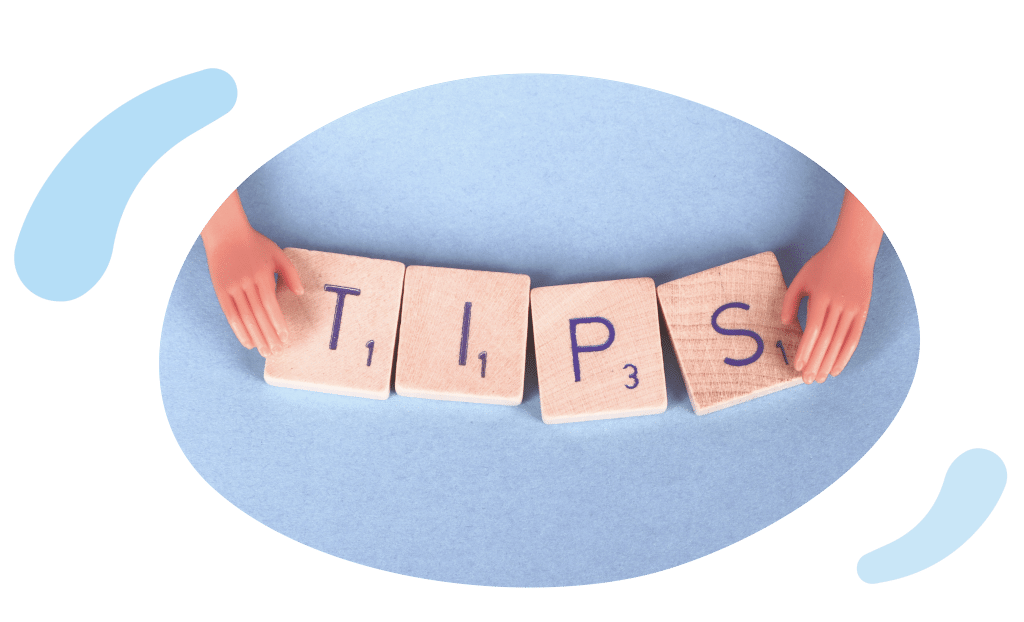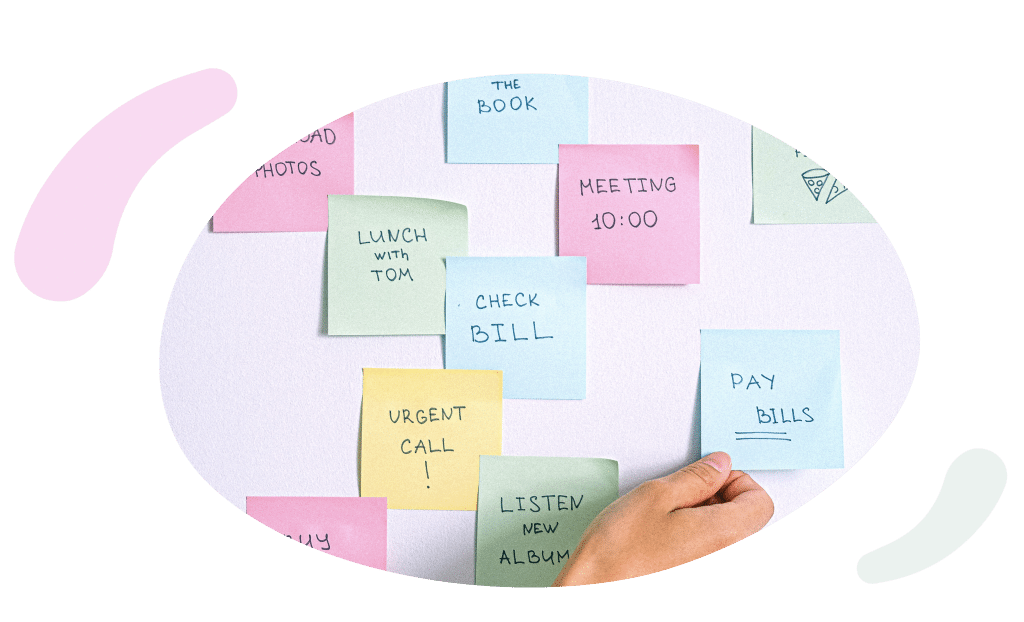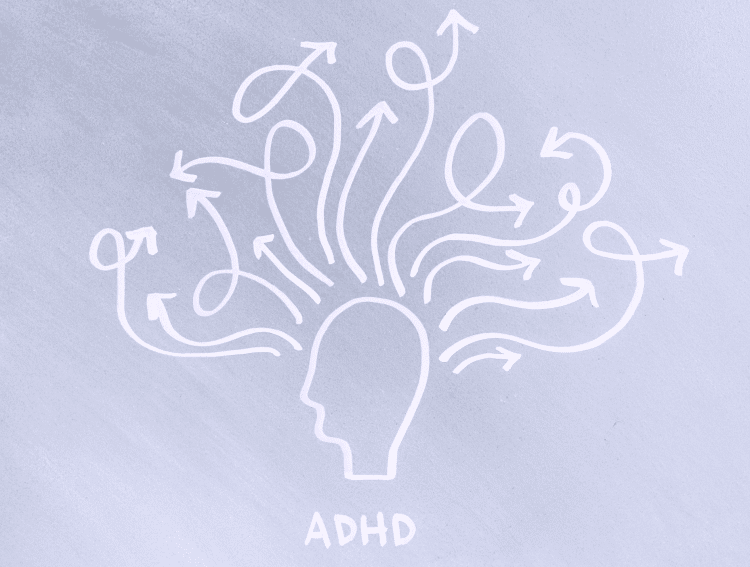Tips for Managing ADHD for Insecure Attachers

Published on May 13, 2022 Updated on April 6, 2023
Although ADHD is more commonly thought of as a childhood condition, approximately 5% of adults have ADHD. The association between attachment theory and ADHD has allowed us some insight into how to efficiently deal with ADHD. Furthermore, this link allows us to adjust tips for ADHD management specifically for people with insecure attachment.

ADHD is typically recognized as a childhood-specific disorder. Indeed, the condition is commonly first noticed in school-aged children struggling to fit into the parameters of formal classroom environments. Although it may not seem like it at the time, children diagnosed at a young age are actually relatively lucky. An early diagnosis means that strategies designed to help their symptoms can be implemented early on. Therefore, between the child’s own efforts and those of their caregivers’, the effect of ADHD can be managed before symptoms become more concrete.
However, some people with ADHD were not fortunate enough to have been diagnosed in childhood. Approximately 60% of these people carry their symptoms into adulthood. If you’re one of the roughly 5% of adults with ADHD, then you likely understand how the condition can affect your work life, relationships, and overall quality of life because of how it impacts your ability to manage your thoughts and emotions healthily, follow directions, and finish tasks on time. For these reasons, this article covers ADHD coping skills and how attachment and ADHD connect.
Don’t know your attachment style yet? Take our free Attachment Style Quiz and discover your attachment style within minutes!
ADHD and Insecure Attachment
As we discussed in our previous article “What Is ADHD? How Does It Relate to Attachment?,” there is a strong association between ADHD and insecure attachment. Essentially, the presence of one condition increases the likelihood of developing the other, as well as how people cope with the symptoms of both.
However, no two people with ADHD or an insecure attachment are the same. On the one hand, they may share similar struggles from time to time. On the other hand, they may also have incredibly individualized issues depending on their personal circumstances and particular attachment style. Therefore, it’s important to take a selective approach to guidance or behavioral strategies designed to alleviate ADHD or attachment issues.
Moreover – if you’re struggling with coping with ADHD symptoms and an insecure attachment style, then it’s essential that you consult your health care professional for guidance on therapy, medication, or a possible combination approach.
Still, there are a number of ADHD tips for adults that you can implement in your day-to-day life to help you manage your traits.
The following strategies were designed to help someone with adult ADHD and insecure attachment manage their moods, strong emotions, inattentiveness, and organizational difficulties. They have been broken down into sections:
- Education tips
- Organization strategies
- And how to manage moods and emotions

Tips for Understanding Your ADHD
The origins of ADHD aren’t entirely clear. Yet, it is believed to be a developmental neurological condition that is impacted/influenced by childhood environmental conditions. Understanding and educating yourself on the conditions of both ADHD and insecure attachment may help you to take a kinder stance towards what you may have perceived as your inadequacies in the past. Your difficulties are not a character flaw.
The following tips for ADHD may help you to understand your struggles:
#1. Don’t Self-Diagnose
First and foremost, it’s important not to self-diagnose. If you suspect that you have ADHD or an insecure attachment disorder, then see a health care professional for confirmation. The most powerful treatment for both ADHD and insecure attachment is to understand how they affect your thoughts and actions.
After all, any form of treatment plan has to be unique to you in order for it to work effectively.
#2. Distinguish Between Your Insecure Attachment and ADHD Traits
It is also important to understand which of your traits are attachment- vs. ADHD-related. Even if there is sometimes an overlap between symptoms, distinguishing the two can be quite helpful. It may be easier to begin the change by targeting a trait that you will see quicker results in.
For example, if organization is problematic for you due to ADHD, you might benefit from starting with your time-management skills. In contrast, feeling insecure and emotionally unsettled due to your attachment style may take more time and work.
#3. Educate the Important Others in Your Life

Just as it is essential for you to understand how ADHD affects your life, it is equally important for the key people in your life to understand it. Educating people such as your partner, family members, friends, and co-workers about your difficulties may help remove the pressure from your shoulders. It could also encourage them in recognising where you might need assistance.
Even better, for someone with concurrent ADHD and insecure attachment, involving others in an ADHD behavioral plan may help strengthen interpersonal relationships – although, those of us high in anxious attachment should be mindful regarding how much input we expect from others.
#4. Listen to Feedback
Adults with ADHD (and an insecure attachment) may struggle with self-awareness and recognizing that their symptoms have been triggered. For this reason, it’s important to listen to feedback from trusted individuals. It may help to make a shortlist of people to whom you should listen or ask advice from. This list could include partners, close friends, co-workers, or health care professionals.
#5. Consider Joining a Support Group
Nobody can understand the difficulties associated with ADHD better than other people with the condition. Moreover, considering that such a high percentage of people with ADHD also have an insecure attachment style. Therefore, you’re bound to meet people who share a similar background and difficulties to you. Never underestimate the healing power of confiding in others – plus, you never know what helpful tips you might get.
Also, if you ever feel in the position to listen to/help others, you’ll likely get a welcome boost of the “feel-good factor” in return.
Organizational Strategies for Coping with ADHD
People with both ADHD and insecure attachment styles may struggle with feeling overwhelmed by the sheer amount of tasks that they need to complete every day. They might have good intentions and aim to complete as many tasks as possible in a day. Their condition may mean that they end up feeling lost on where to start. Consequently, these people may up getting very little done by the end of the day and end up feeling swamped and frustrated.
Organization techniques such as the following may help adults with ADHD manage their time more efficiently, as well as remove potential distractions and feelings of frustration.
#1. Create a Structured Home Environment
An organized home can benefit both people with ADHD and an insecure attachment style. This is because organization can feel overwhelming to those who struggle with distractibility, decision-making, and strong emotions.
A structured approach to home organization could include the following steps:

- Tackle one room at a time – taking into consideration the intended function of the room
- Create an organization plan for the room and dedicate approximately 45 minutes to each task
- Declutter by creating a “keep,” “throw away,” and “donate” pile for all the items in the room
- Once all of the items in the room belong to a pile, schedule time to either donate, throw away, or reorganize the items
- If home organization proves to be too overwhelming or difficult, you could consult a professional home organizer for advice
#2. Create a Hierarchy Schedule
A hierarchy schedule involves writing down a list of tasks that need to be completed in a day in terms of importance.
Every night, try spending a couple of minutes jotting down everything you think you need to do, beginning with the more important/difficult tasks. Start them the next morning, ticking them off as you complete them. Doing so will increase a sense of ownership over your day. It will also boost your sense of agency, positivity, and accomplishment.
Alternatively, if putting the more difficult ones first feels too overwhelming for you, you could try starting with the easier ones, therefore boosting your confidence for tackling the more difficult chores as you complete the less demanding ones.
What’s more, to increase your chances of success, you could try clustering your tasks. For example, take care of correspondence in one fell swoop by answering emails, letters, and phone calls in the same time window. Or you could do all the housework chores at once instead of spreading them out throughout the day.
Also, make sure to account for unexpected hurdles to completing your schedule each day by creating space in your schedule.
#3. Train Your Attention

It’s not that adults with ADHD can’t focus – they can. But they may have difficulties maintaining their focus, or – if they have a co-occurring insecure attachment – may find that their moods and emotions too distracting to retain focus. However, everyone’s career, education, or training, involves paying attention in order to complete tasks successfully. Yet it can be difficult to do so when there are often multiple instructions from different people regarding a wide range of tasks. So it may help to work on strengthening your attention span, this can help also people struggling with phubbing.
When possible, get instructions in writing. If you have a lecture, meeting, training day, or another event that requires retaining focus, ask for the necessary materials such as a meeting outline, lecture notes, or agendas, upfront. Also, make sure to take your own notes during the event. This engages your active listening skills and ensures that you remain involved and less distracted.
It’s not always possible to get instructions in writing. So, if someone is giving you verbal directions, try naturalistically repeating their words back to them. Doing so cements the directives in your mind, as well as demonstrates interest to whoever is speaking to you.
People with ADHD may be prone to bouts of restlessness. So it may help to move around from time to time by going for a short walk or toilet break. Of course, it may not always be appropriate to do so, but as long as you aren’t disturbing other people it should be fine. However, if you’re attending a meeting or a formal event, you could try using devices such as a stress ball to help hone your attention.
#4. Set Up a Rewarding Environment
Most people with adult ADHD and comorbid insecure attachment styles grew used to environments that discouraged them rather than rewarded. This was likely due to a misunderstanding around how ADHD typically operates, so many people faced their limitations rather than the opportunity to succeed.
However, as an adult, you have the freedom to educate yourself and others to help increase understanding of the traits of ADHD, and also set up your own environment to help promote your skills. Set up your surroundings so that they’re personally beneficial. Perhaps try color-coding, as many people with ADHD are visually-orientated. Thus you can create schedules and reminders that are more memorable and attention-grabbing.
You could also try placing affirmations, reminders, or notes-to-self in places where you are more likely to see them to help boost your self-esteem and focus.
#5. Break Tasks Into Smaller Components
People with ADHD or an insecure attachment style may feel overwhelmed by the prospect of big tasks that require great attention to detail or multiple complicated steps. This may result in avoidance of the task and increased feelings of stress. To prevent feeling swamped, you could try breaking large tasks down into their more manageable components.
Perhaps use a checklist or write down the separate elements of the task. This will create a visual roadmap that will help to keep you on track. Doing so can increase feelings of accomplishment and confidence. It may even give you the courage to tackle more difficult or complex tasks in time.

#6. Stay on Top of Finances
Disorganization, impulsivity, procrastination, and lack of confidence can make finance management incredibly difficult for people with ADHD and an insecure attachment style. Yet, unfortunately, finance management is a skill that we all need to master to prevent monetary problems or financial stress.
Taking a proactive role in your own financial management increases feelings of competence and accountability, as well as prevents potential problems. Try setting yourself reminders to pay bills on your phone, use online banking (such as app banking) to keep on top of your finances, and regularly check your accounts to keep track of how much you’re spending and on what.
Mood Management Tips for Coping with ADHD
We all experience intense emotions such as anger, frustration, and anxiety from time to time. However, both ADHD and an insecure attachment style can enhance these emotions as well as make them difficult to manage. For some people, this struggle to regulate emotions can interfere with relationships, home life, work-life, and overall happiness levels. Fortunately, mood management strategies can help balance out the extremes between emotions and are relatively accessible for most people.
Remember, it’s important to consult a medical professional for advice if you’re struggling with strong negative emotions relating to your ADHD or insecure attachment style (or in general). However, in the meantime, the following techniques can help you to cope with your emotions and moods:
#1. Understand that Your Moods Will Change

Recognize that your moods and emotions will fluctuate from time to time, and sometimes feel unpredictable. This may be because you struggle to determine the triggers of either your ADHD symptoms or insecure attachment traits.
Focusing on methods of making yourself feel more regulated and understanding that these negative emotions will pass, rather than wasting your time blaming yourself or others for why you’re upset will help your negative mood transition quicker.
Tolerance of bad moods can increase resilience, so techniques such as Urge Surfing, meditation, and mindfulness, as well as interactive activities, may help.
#2. Schedule Regular Venting Time
Negative emotions and feelings inevitably build up inside us all like steam in a pressure cooker from time to time unless we schedule times to release the pressure in healthy, effective ways. This is especially true of people with ADHD and an insecure attachment style. Try to figure out what works best for you as a stress reliever and work it into your weekly schedule. It could be activities like a martial arts class, going to the gym, or taking up dance.
However important venting may be, it’s equally as important to schedule some calm time – such as reading a book, taking a nap, meditating, or watching a film.
Timetabling for both stress relief and downtime in your weekly plan will help you stick to it, help you recharge your batteries, and not feel guilty about dedicating important self-care time to yourself.
#3. Prepare for the Blues
Frustratingly, people with ADHD commonly report low moods after experiencing success or excitement. It seems paradoxical, but once the stimulus associated with the success or anticipation of a challenge is over, people with ADHD can swing to the other extreme of emotions. Insecure attachment styles can further enhance this experience.
However, being aware of this phenomenon can help you prepare for the blues. Try creating a list of mood-enhancing distractions. For example, make a list of friends that you feel comfortable calling or engaging in an enjoyable activity with, keep your favorite films or tv series in the house, or go on endorphin-inducing activities such as a hike or a run.
#4. The Health Trio: Diet, Sleep, and Exercise
It’s important to get back to basics if you’re struggling to manage your mood swings.
Although your diet may not dramatically change how you feel, small, consistent changes can enhance your mood over time. For example, certain food additives (such as the E numbers) have been associated with difficulties focusing, especially in children with ADHD. Balancing blood sugar and hormone levels through a diet of complex carbohydrates and proteins can help you retain attention, energy, and a positive mood for longer periods of time.

Although it sounds like obvious advice, a regular sleep schedule is essential for balanced moods, energy levels, and the ability to focus. Create a strict – but easy to adhere to – sleep routine to help you relax and drift off to sleep. Minimize distractions by not checking your phone, go to bed at the same time every night, and consider a warm bath or shower before bedtime.
Schedule regular exercise into your life for those positivity-inducing endorphins. Exercise is one of the best methods of treatment for ADHD as it helps burn off surplus energy, allows an otherwise overactive mind to tune out, and balances the neurochemical system of the brain. For these reasons, it’s clear that exercise is helpful for an insecure attachment style also. Just make sure to pick a form of activity that suits your physical ability, lifestyle, and interests so that you can adhere to it for the long term.
#5. Choose Your Partner with Care
People with ADHD need to feel understood and cared for by their partners. Obviously, this is something that we all need to feel fulfilled within a relationship. But people with ADHD and a concurrent insecure attachment style may be prone to choosing partners that are emotionally unavailable or unstable.
To promote your positive moods, consider whether your current partner – or partners in the past – are meeting your needs and helping you to feel like the best version of you. No relationship is perfect, but someone with ADHD can thrive with the right assistance, or flounder if they feel unsupported.
#6. Practice Self-Kindness

A lifetime of struggling with the symptoms of ADHD and/or an insecure attachment style can result in ingrained, automatic patterns of negative self-talk. These patterns are often so deep-rooted that they’re subconscious. We don’t notice how hard we are on ourselves and how much our negative self-talk affects our moods.
It can be tricky to identify what triggers bad moods, but you can start to alter how you speak to yourself by changing your attitude towards what you perceive as your challenges. Learn how to joke about your struggles, such as your forgetfulness, difficulty focusing, or impulsivity. Doing so can help you to feel more comfortable and relaxed around others, as well as help you to see the lighter side of life.
Also, you can break the cycle of negative self-talk by practicing a more healthy, productive narrative.
Positive affirmations are easy to make, effective, and evidence-based positive phrases that we use to challenge defeatist thoughts. They can be used to increase motivation, focus attention, forge more secure relationships, and boost self-perception. Also, the best part about positive affirmations is that you literally just pick a phrase that boosts your mood and repeat it to yourself.
How to Deal with ADHD Effectively: Final Thoughts
Overall, making small changes in our lives to prioritize self-care and manage the symptoms of ADHD and an insecure attachment style can have a massive impact on our quality of life and mental health. However, remember that behavioral strategies and self-care techniques are not a substitute for professional help. If you’re struggling to cope with your symptoms, make sure to consult a professional in the area for advice.

References
Clarke, L., Ungerer, J., Chahoud, K., Johnson, S., & Stiefel, I. (2002). Attention Deficit Hyperactivity Disorder is Associated with Attachment Insecurity. Clinical Child Psychology and Psychiatry, 7(2), 179-198.
https://www.nhs.uk/conditions/food-colours-and-hyperactivity/
Kissgen, R., & Franke, S. (2016). An attachment research perspective on ADHD. Neuropsychiatry, 30, 63-68.
Kordahji, H., Ben-David, S. & Elkana, O. (2021). Attachment Anxiety Moderates the Association Between ADHD and Psychological Distress. Psychiatric Quarterly, 92, 1711–1724.
Safren, S., Stitch, S., Perlman, C., Otto, M. (2017). Mastering Your Adult ADHD: A Cognitive-Behavioral Treatment Program, Client Workbook. 2nd Edition. Oxford University Press.
Storebø, O. J., Rasmussen, P. D., & Simonsen, E. (2016). Association between insecure attachment and ADHD: environmental mediating factors. Journal of Attention Disorders, 20(2), 187-196.











 Get mental health tips straight to your inbox
Get mental health tips straight to your inbox








